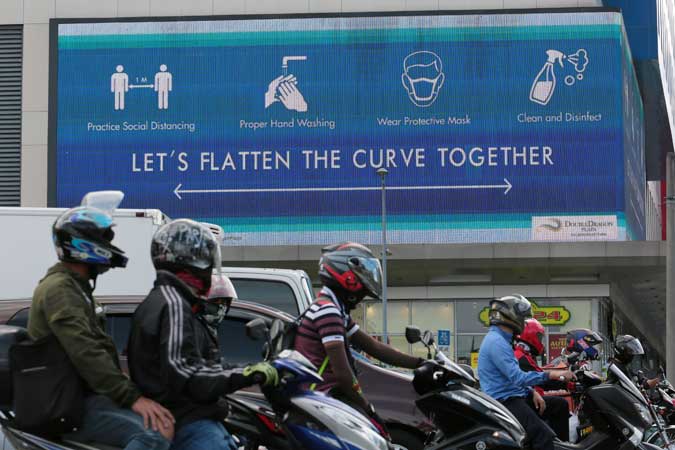
A FRESH SURGE in coronavirus disease 2019 (COVID-19) infections will likely further delay the Philippine economy’s recovery, S&P Global Ratings said on Monday.
If recovery is derailed, S&P said in a separate report the financial buffers of some Philippine banks may not be able to absorb a rapid deterioration in asset quality.
“The major emerging markets in this region — Indonesia, Malaysia, the Philippines, and Thailand — are living with the effects of new waves that only recently look to have peaked. S&P believes this could prolong their paths to recovery,” it said in a note “Delay Risk On The Rise For Southeast Asia’s Recovery.”
The debt watcher’s baseline forecast for the Philippines this year remains at 9.6%, much faster than the government’s 6.5% to 7.5%. Last year, the economy slumped by a record 9.5% as the government implemented one of the world’s strictest and longest lockdowns.
The baseline estimate assumes the Philippine output level will return to its pre-pandemic level by December 2021, although downside risks to this view have emerged due to possible surges in COVID-19 cases.
This is a slower recovery compared with Indonesia (April 2021), Malaysia (July 2021), and Thailand (August 2021), where output will likely recover to pre-pandemic levels earlier in the year.
“The biggest threat to timely economic recovery is individual consumer behavior, as people stay home more and spend less,” it said, defining recovery as quarter-on-quarter growth that is above trend.
Household consumption accounts for at least 70% of gross domestic product (GDP) in the Philippines, and nearly 60% in Indonesia and Malaysia.
Given the continued downside risks from the COVID-19 outbreaks, S&P trimmed the sequential growth outlook for the Philippines. If recovery is delayed by two months, S&P expects GDP growth at 7.7% this year. GDP is expected to grow by 7.4% if there is a four-month delay in recovery, and by 7.1%, if there is a six-month delay.
If recovery is delayed by six months, Philippine output will only return to pre-pandemic levels by May 2022.
“In a six-month delay scenario we factor in more economic scarring caused by a prolonged recession, which causes a greater amount of permanent economic damage,” S&P said.
“The longer an economy is stuck with unemployed resources, the larger the damage to balance sheets and workers. More businesses would close, and more workers would lose jobs, skills, and motivation,” it added.
Amid limited testing capacities compared with Western economies, S&P noted hospital capacity is a more important indicator of government policies compared with reported cases. The debt watcher’s baseline scenario is that the region will see widespread distribution of vaccines by the second half of the year which could then boost economic activities.
In the Philippines, infections rose 2,288 to reach 563,456 on Monday. Data from the Department of Health showed more than half of isolation beds (62%), intensive care unit (68%) beds, and ward beds (78%) remain available.
Vaccines are expected to arrive in the country within the month. The government is targeting to inoculate 70 million Filipinos by end-2021.
Government officials have been pushing to further ease restrictions to drive economic recovery.
‘LONG ROAD TO RECOVERY’
In a separate report, S&P said the Philippine banking industry is on a “long road to recovery” with asset quality seen to further deteriorate as banks recognize the extent of the pandemic’s impact on borrowers.
The debt watcher said the industry’s nonperforming loan (NPL) ratio may reach 6% in 2021, from 3.6% in 2020.
“High provisioning in 2020 and capital buffers can buy the sector time, assuming the economic revival stays on track. Our negative outlook on rated banks reflects our view that financial buffers could not absorb the rapid deterioration in asset quality likely to ensue if the recovery is derailed,” S&P analysts Nikita Anand and Ivan Tan said.
NPLs could spike in the first quarter, as loan moratoriums and fiscal support end.
“We believe NPLs could peak in the second half… A rebound in economic activity as well as ultra-low interest rates should support borrowers’ repayment ability in 2022,” they said.
Banks will likely see mild recovery in profits this year, and are not expected to return to pre-pandemic financial performance until 2023, S&P analysts said. — Luz Wendy T. Noble

